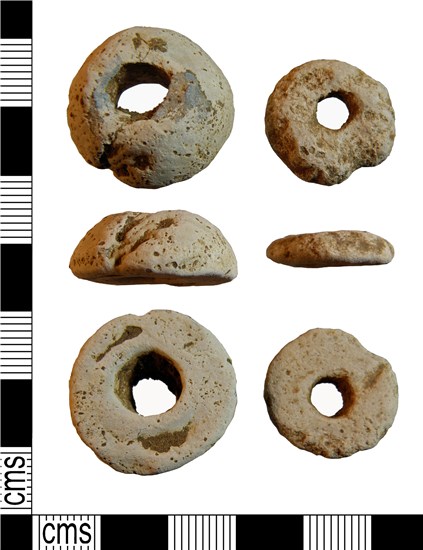This month we will take a look at one of the most plain and humble of finds made across the county; that of the lead spindle-whorl. The two examples illustrated were both found in the same field near Reepham and date from circa 1000-1600 CE.

These objects have been made in largely the same basic form since humans first learned to spin natural fibres into yarn. They were used exclusively in hand-spinning, attached to a spindle-stick to provide the weight necessary to give stretch on the fibres being spun, as well as creating the inertia to twist and spin the fibre into yarn. Whorls are relatively common discoveries and are found across the landscape, with eight examples being handed in for recording this month alone. In this period hand spinning was an exclusively female occupation and spindle whorls are sometimes recovered from pre-Christian female graves as grave goods. The use of spinning wheels which eliminated the need for spindle whorls started to be introduced around the 14th century but hand spinning in Norfolk went on well into the 16th century (Margeson 1993, p184).

Hand-spinning has the advantage of using basic and mobile equipment enabling it to carried out on the move whilst performing other tasks. The Luttrell Psalter a manuscript written and illustrated in East Anglia sometime between 1335-1340 CE shows a woman carrying hand-spinning equipment whilst feeding the chicks. The whorl can be seen attached to the spindle stick above her left hand.
You can find an interesting link on the subject showing hand-spinning in action just here. https://www.youtube.com/watch?v=ocbRbd54Hiw
Bibliography
Margeson, S.; Norwich Households; The Medieval and Post-Medieval Finds from Norwich Survey Excavations 1971-1978. East Anglian Archaeology. Report No.58, 1993 p184.